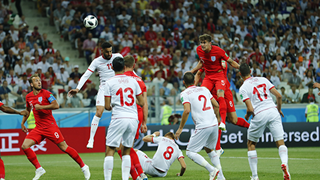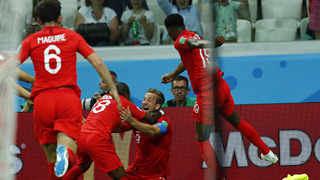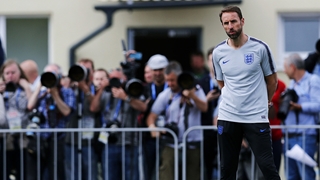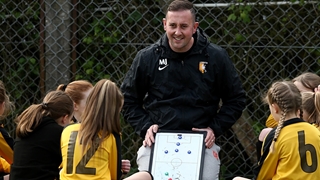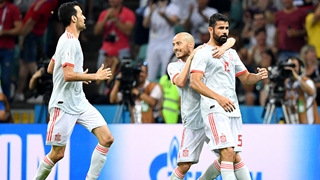
Congestion blocks combinations
Deep-lying defensive arrangements are not uncommon in international football and the World Cup in Russia has, so far, proved no different.
Although there have been pockets of intriguing and open football, how to prise open a compact defence has dominated the tactical narrative in many games.
For all of Spain’s bewitching passing and movement, intricate combination play hasn’t been the aspect of attacking where most teams have been rewarded.
Faced with congested central areas and little space behind defensive backlines, attacks have been regularly forced into wider areas. As such, there has been focus on accurate deliveries into the penalty area.
Aleksandr Golovin created two goals from crosses in Russia’s opening victory against Saudi Arabia demonstrating the effectiveness of delivering teasing crosses – often inswinging - from deeper wide areas.
Other strategies used to overcome the defensive block have included: driving runs from defenders in a back three (England v Tunisia); encouraging teams to press high in order to play through them (Spain v Iran); and teams willing to mix their attacking style with accurate longer passes (see below).
Set-pieces bring surprise and success
When attacking strategies have failed, set-pieces have provided a source of success. Specialist set-piece takers have routinely proved their worth with numerous goals scored directly from - or as a result of - set-pieces.
The ability to think clearly and execute in the moments that matter will no doubt continue to bring reward as the tournament progresses. Ronaldo’s last gasp free-kick equaliser in Portugal’s 3-3 draw with Spain underlined the need for both mastery of ball and mind when confronted with pressure. The same is true for penalties.
Those willing to think differently at set-pieces may also prosper. Unpredictable set-piece routines have opened up defences through surprise, as some of Spain’s ideas have shown. Colombia’s Juan Quintero also found reward in attention to detail, by rolling a free-kick under the jumping Japanese wall.
Set-pieces have also illuminated defensive frailties, with questions raised about positioning, communication and ability to make first-contact when defending balls into the box.
Unorthodox shooting techniques
With defenders anxious not to concede space behind them, precious pockets of space can be found outside of the box. Shooting from distance has been common and a number of eye-catching strikes have decorated the tournament so far.
Luka Modric (Croatia v Argentina), Nacho (Spain v Portugal), Philippe Coutinho (Brazil v Switzerland) Dries Mertens (Belgiam v Panama) and Denis Cheryshev (Russia (second goal) v Saudi Arabia), could all lay claim to goal of the tournament so far.
The variety of techniques used – fake to shoot, half-volley, curling strike, controlled volley and outside of the foot - have highlighted the unorthodox skills required to adapt to shooting opportunities at the elite level.
Notably, many of the strikes listed above came from a dropping second-ball or deflection, rather than a set-up pass – an important consideration for practice design.
Heading for prominence
With crossing and set-pieces featuring significantly, it is no surprise that headers have played a key role in the way goals have been scored.
John Stones and Harry Maguire both demonstrated their anticipation, timing and physical qualities to make first contact from corners in England’s 2-1 victory over Tunisia.
Although neither player scored directly, Harry Kane was the beneficiary on both occasions – the Three Lions’ captain reacting quickly to register a brace of goals. Kane’s first was a predatory tap in; his second a clever and controlled header from close range.
Quick play and accurate long passes
With many teams eager to retreat to a deep- block when possession is lost, accurate longer passes whilst defences are disorganised have proved effective.
Sergio Busquets’ long pass for Diego Costa’s first goal in the Spain versus Portugal game showed the benefit of adding variety to a short passing approach.
The Barcelona midfielder quickly identified the opportunity to locate the Spain forward in the opposition half before the Portuguese midfield could recover in front of the defence.
It is a strategy Russia are increasingly using with their target-man, Artem Dzyuba, and a developing part of France’s attacking approach spearheaded by Olivier Giroud.
Quick passes into space also proved effective in England’s first half against Tunisia, with Jordan Henderson and Kieran Trippier releasing England’s attacking unit on a number of occasions.
Fancy being a coach yourself? Find out everything you need to know on how to get started.


